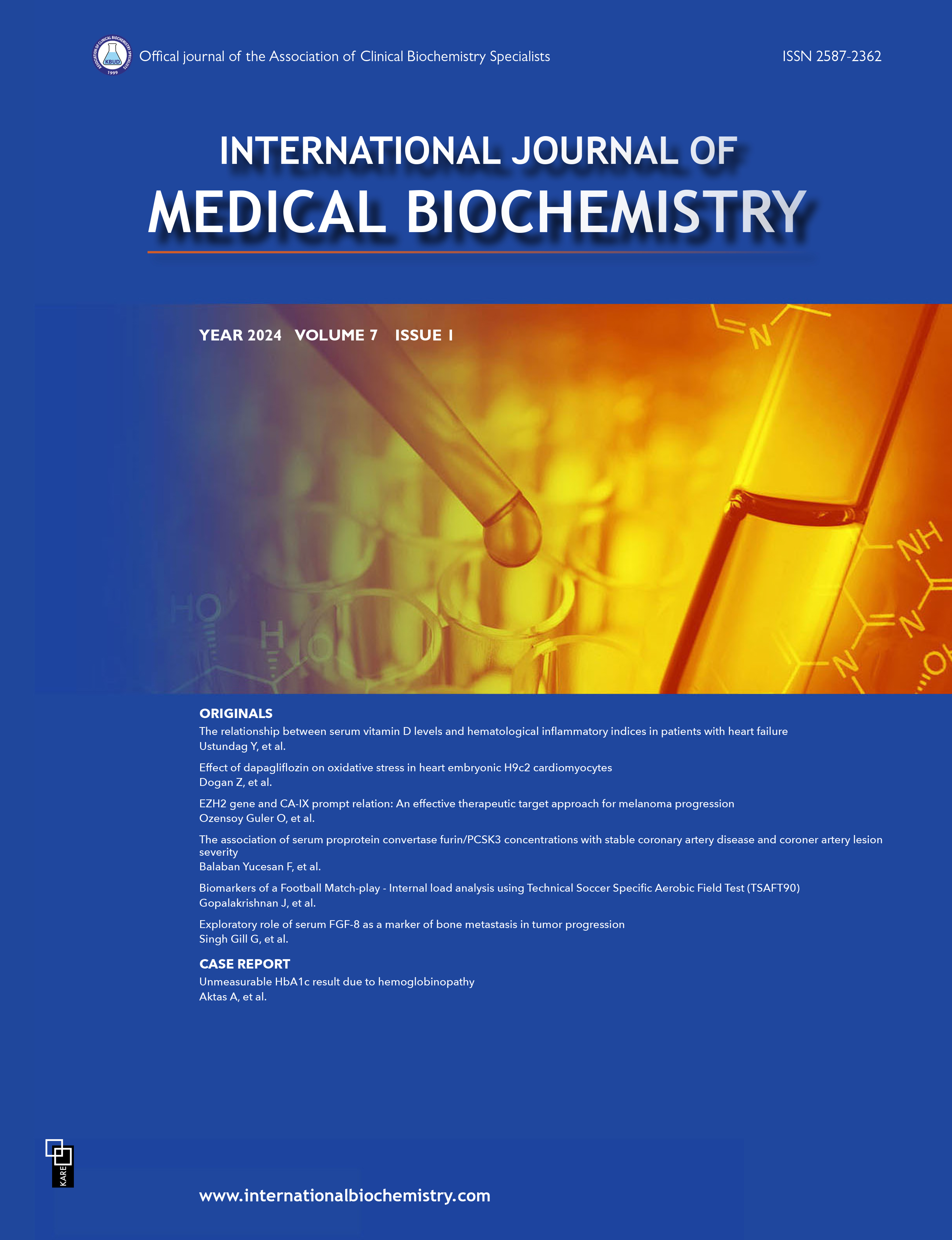The role of cholesteryl ester transfer protein TaqIB polymorphism in young atherosclerotic heart disease
Bilal İlanbey1, Meral Kayıkçıoğlu2, Ebru Demirel Sezer3, Sacide Pehlivan5, Ferhan Girgin Sagin3, Ferda Ozkinay4, Eser Y. Sozmen31Department of Medical Biochemistry, Kırsehir Ahi Evran University, Kirsehir, Turkey2Department of Cardiology, Ege University, Izmir, Turkey
3Department of Medical Biochemistry, Ege University, Izmir, Turkey
4Department of Medical Genetics, Ege University, Izmir, Turkey
5Department of Medical Biology, Istanbul, Turkey
INTRODUCTION: There is growing evidence that oxidative modification of low-density lipoprotein (LDL) plays a central role in the pathogenesis of atherosclerosis, which is increasingly seen at younger ages, and that high-density lipoprotein (HDL) levels are inversely associated with the risk of coronary artery disease (CAD). Cholesteryl ester transfer protein (CETP) has a role in the regulation of plasma HDL levels. The most studied polymorphism in the CETP gene is the Taq1B polymorphism, which has consistently been correlated with HDL levels. This case control study of a young (<50 years) Turkish population group with CAD was designed to assess whether there is a relationship between LDL oxidation and CETP Taq1B polymorphism.
METHODS: A total of 97 patients with CAD and 43 healthy volunteers were included in the study. Traditional risk factors for CAD (age, gender, smoking, hypertension) were evaluated in the patient group. Oxidative markers of LDL were determined in both groups, as well as routine biochemical parameters. Following DNA extraction from white cells, CETP Taq1B polymorphism was determined using polymerase chain reaction amplification and restriction enzyme digestion. Fragments 174 and 361bp were identified as B1, and unrestricted 535 bp fragments as B2.
RESULTS: There was no statistical significance between the B1B1, B1B2, B2B2 genotypes in the patient group in terms of body mass index, waist-to-hip ratio, or biochemical parameters. Though the HDL cholesterol levels were higher in the B2B2 genotype, there was no statistically significant difference in comparison with the control group.
DISCUSSION AND CONCLUSION: The genetic polymorphism of CETP had no significant effect on CETP function and the CETP polymorphism should not be proposed as an independent risk factor for cardiovascular events.
Corresponding Author: Bilal İlanbey, Türkiye
Manuscript Language: English



















